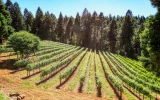13 Things to Know Before Starting a Tree Farm
Starting a tree farm comes with its own unique set of challenges and considerations. This article discusses 13 intriguing and engaging things you should know before diving into this endeavor.
Before you start a tree farm, consider your soil type, learn about common diseases, look into agroforestry options, explore opportunities for carbon credits, plan finances accordingly, look at spacing guidelines, plan for wildlife habitat, check zoning regulations, consider using drones, and research tax incentives.
You may also consider future property ownership, research grant programs, and prepare for climate change. Read on to gain a well-rounded understanding of what it takes to lay the proper groundwork for a successful and sustainable tree farming business. Careful planning up front can help you avoid costly mistakes down the road and start your operation on the right footing.
Summary
- Make sure the land is suitable for the tree species you want to plant. Proper drainage is important.
- Tree farming may have different land use rules than other agriculture. Know what permits you need.
- Be able to identify and treat diseases early to protect your crop. Some may require the removal of infected trees.
- Look into tax breaks, grants, and carbon credits. Understand the costs of equipment, care, and long timelines over decades until harvest.
- Develop a business plan, consult local farmers, research markets and products, and visit established operations to help ensure success from the start.
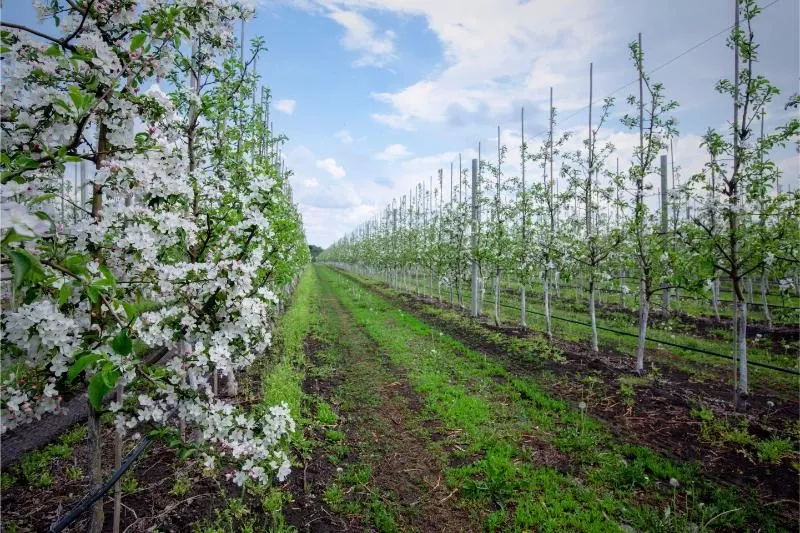
On this page:
- Pests and Diseases Specific to Tree Species
- The Importance of Soil pH and Composition
- Agroforestry Practices
- Carbon Credits and Environmental Impact
- Long-Term Financial Planning
- Tree Spacing and Thinning Techniques
- Wildlife Interactions
- Legal and Regulatory Considerations
- Consider Using Drones
- Research Tax Incentives
- Consider Future Property Ownership
- Research Grant Programs
- Impact of Climate Change
Pests and Diseases Specific to Tree Species
Different tree species are susceptible to different pests and diseases. As a tree farmer, you should research the specific species you plan to grow, and familiarize yourself with their common problems.
Some examples of common tree pests include:
- Aphids: These small, sap-sucking insects can harm your trees by causing leaf curling and discoloration.
- Borers: Larvae of various beetles and moths can damage your trees by tunneling into the wood, leading to branch dieback and sometimes even tree death.
- Spider mites: Minute pests that can cause yellowing, browning, or stippling on leaves.
And here are a few examples of widespread tree diseases to watch out for:
- Leaf rust: This fungal infection can cause orange, gold, or reddish spots on leaves, which may weaken the tree over time.
- Powdery mildew: A fungal disease that appears as a white or gray powdery growth on leaves, interfering with photosynthesis and lessening the tree's overall health.
- Root rot: Caused by various fungi, this disease can lead to reduced growth, poor leaf color, and even tree death if left untreated.
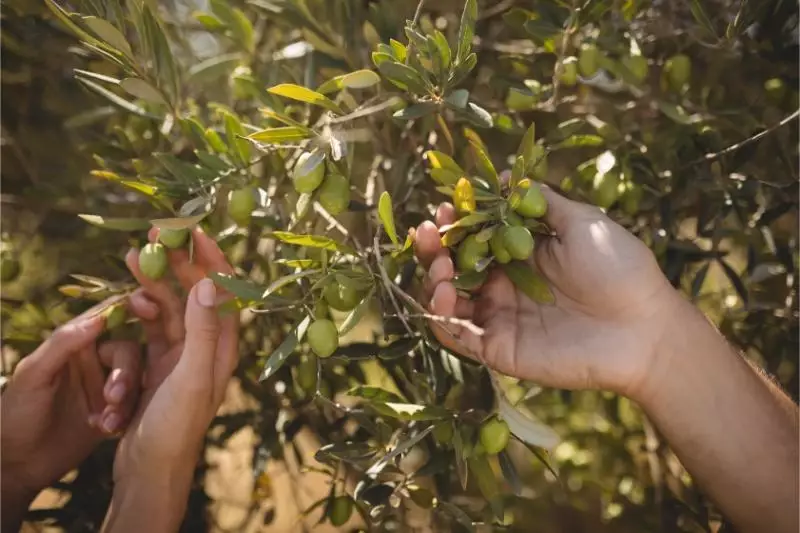
The Importance of Soil pH and Composition
Soil pH, which measures the acidity or alkalinity of the soil, has a significant influence on the health and growth of your trees. Most trees will grow well in soils with a pH between 6.5 (slightly acidic) and 7.2 (slightly alkaline), but some trees like azaleas, rhododendrons, and blueberries prefer a more acidic soil with a pH below 6.0.
To understand your soil's pH, you can conduct a soil test that will reveal the pH level and the nutrient requirements necessary for optimal tree growth. Knowing your soil's composition is equally important because it will dictate the availability of essential nutrients for your trees.
There are three main types of soil:
- Sandy soil: This soil type drains quickly and is easy to cultivate but may lack nutrients.
- Loamy soil: This soil type has a good balance of nutrients and water retention, making it ideal for many tree species.
- Clay soil: This soil type retains water and nutrients but can be challenging to work with due to poor drainage and compaction.
To improve the quality of your soil for your tree farm, you may need to amend it with organic matter such as compost, wood chips, or aged manure.
Agroforestry Practices
As you plan your tree farm, considering various agroforestry practices can help you manage your land efficiently. These techniques aim to combine trees with crops or livestock, fostering a healthy ecosystem with multiple benefits.
| Practice | Description |
|---|---|
| Alley cropping | Planting crops between rows of trees |
| Multistory cropping | Layers of trees and crops in a forest-like system |
| Silvopasture | Integrating trees, forage plants, and animals |
| Windbreaks | Barriers that block wind and protect the farm |
One common practice to look into is alley cropping. In this approach, you will plant agricultural crops between rows of trees. This method allows you to utilize the available space efficiently and provides crops with much-needed shade and protection from winds.
Another technique you might find useful is multistory cropping, also known as forest farming. This practice involves growing different types of crops and trees together, producing a multilayered system that mimics a natural forest. The layers may include taller trees, smaller trees, shrubs, and annuals or perennial crops. This not only offers habitat variety for insects and animals but also maximizes productivity by using the vertical space more effectively.
If you plan on raising livestock along with your tree farm, silvopasture might be just what you need. This practice integrates trees, forage plants, and animals together in a mutually beneficial system. The trees provide animals with shade and shelter, while the animals' natural fertilizers contribute to soil health, encouraging the growth of forage plants and trees alike.
To protect your tree farm against harsh winds, consider the establishment of windbreaks. These potential barriers can be composed of trees, shrubs, or even man-made structures strategically placed to block wind. Windbreaks protect your crops, trees, and buildings, reduce soil erosion, and increase energy efficiency in nearby structures.
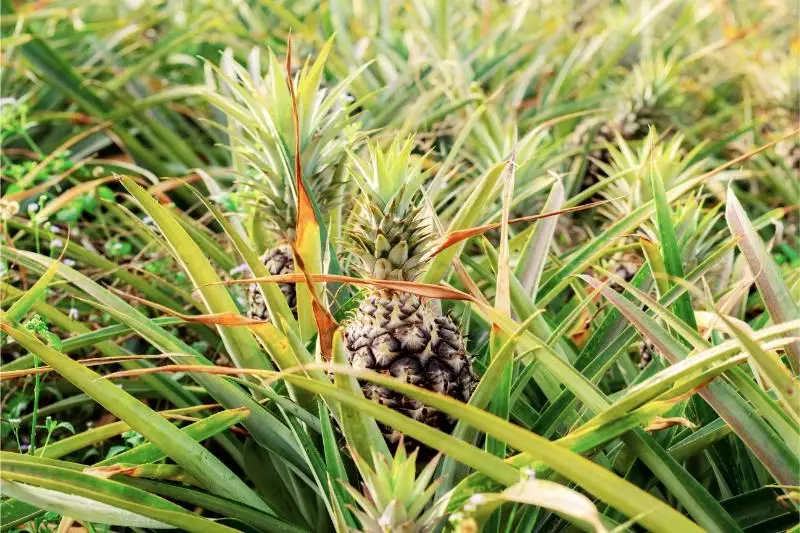
Carbon Credits and Environmental Impact
Starting a tree farm can have a positive impact on the environment by helping to sequester carbon dioxide from the atmosphere. As trees grow, they absorb and store carbon dioxide, which can be sold as carbon credits to companies looking to offset their own carbon emissions. By participating in carbon markets, you can generate additional income for your tree farm.
Carbon credits are created when landowners implement sustainable practices, such as planting trees, that increase the rate of carbon storage on their land. Each credit represents one metric ton of carbon dioxide captured and stored. Many regulated industries purchase these credits to meet their carbon emission limits or as part of their corporate sustainability goals.
When planning your tree farm, consider implementing regenerative agriculture practices, like reducing soil disturbance or utilizing cover crops, to maximize your farm's carbon sequestration potential. In addition to sequestration, these practices can improve soil health, water retention, and nutrient cycling, which can lead to higher plant survival rates.
Here are some tips to optimize your tree farm for carbon credits:
- Choose the right tree species: Opt for tree species that grow quickly and are native to your region, as they are more likely to thrive and sequester larger amounts of carbon.
- Utilize proper planting techniques: Proper planting techniques can ensure healthy tree growth, leading to higher carbon sequestering potential.
- Practice effective forest management: Thinning trees when necessary and quickly addressing pest infestations can improve tree health and contribute to higher carbon sequestration rates.
Generating carbon credits may involve monitoring and verification of your farm's practices. This can include documenting your farm's management techniques, submitting soil samples, or undergoing third-party verification. Ensuring proper documentation and verification will make it easier for you to participate in carbon credit markets and potentially generate additional income for your tree farm.
Starting a tree farm that focuses on carbon credits not only benefits your bottom line, but it also contributes to a healthier planet by reducing greenhouse gas emissions.
Long-Term Financial Planning
Growing trees for profit requires patience, as it can take years before your trees are ready to sell. Here are some key steps you should take to ensure a solid financial foundation for your tree farming business.
-
Determine your startup costs: Your initial investment will include the cost of land, seedlings, irrigation systems, and necessary equipment. Research costs in your area, and be prepared for potential fluctuations in pricing. Some tree farmers report six-figure incomes once their business is well-established.
-
Research different tree species: Certain tree species, such as hardwood or Christmas trees, can yield higher profits. However, they might require more time, maintenance, or specific growing conditions. Choose species based on your region's climate and soil type, local demand, and anticipated growth rate.
For example, you may consider:
- Fast-growing hardwoods, like oak or maple.
- Softwoods, like pine or spruce.
- Fruit or nut trees, like apples or walnuts
- Ornamental trees and shrubs, like dogwood or holly.
- Project your income and expenses: After assessing startup costs and selecting tree species, create a business plan that projects your anticipated income and expenses. Tree farming is a long-term investment, so try to forecast potential profits and costs for at least five years.
| Year | Projected Income | Projected Expenses |
|---|---|---|
| 1 | $10,000 | $12,000 |
| 2 | $12,000 | $14,000 |
| 3 | $14,000 | $15,000 |
| 4 | $16,000 | $15,500 |
| 5 | $18,000 | $16,000 |
- Consider potential grants or loans: Tree farming can qualify for financial assistance, such as government grants or low-interest loans. Research available funding options and determine which ones you might be eligible for.

Tree Spacing and Thinning Techniques
Knowing the optimal distance between trees and when to thin them can significantly impact your tree farm's productivity and overall health.
Initial tree spacing is essential to ensure healthy growth and maximize timber value. Depending on the species and soil type, you may need different spacing guidelines. For example, hardwoods such as oaks or maples generally require wider spacing (12–20 feet), while pines or firs need closer spacing (6–10 feet). Ultimately, working closely with a professional forester or agronomist can help determine the optimal tree spacing for your specific tree farm.
As your trees grow, you'll likely find that some are more vigorous and healthy than others. To prevent competition for resources like light, water, and nutrients, you must employ thinning techniques. Thinning involves removing less productive trees to concentrate growth on healthier ones and improve your overall tree farm's future crop quality. The OSU Extension Service offers valuable insights and guidelines for thinning trees effectively.
Here are a few essential tips for thinning your tree farm:
- Timing: Initiate thinning when trees begin to compete for resources. It could start as early as 5 years after planting for some species and will depend on your tree farm's specific conditions.
- Selectivity: Remove trees with defects, diseases, or poor growth to maintain high-quality crop trees.
- Multiple rounds: Thinning should be carried out in several stages throughout the tree farm's lifetime. For instance, according to Penn State Extension, a first thinning might take place between 15 and 20 years after planting for some species.
- Safety: Learn to use equipment like chainsaws safely and follow professional guidelines to prevent injuries.
Wildlife Interactions
A well-planned tree farm can create a habitat that supports various species while maintaining a productive and sustainable business.
Firstly, know your local species. Familiarize yourself with the animals that live in the area of your tree farm. Some species might benefit from the additional plant life, while others, such as deer, may cause damage to your trees. By understanding the needs and behaviors of local wildlife, you can plan your farm accordingly.
Incorporate habitat features to support a diverse range of species. This can be done by providing:
- Tree diversity: Offer a mix of tree species, sizes, and ages to attract various types of wildlife.
- Understory vegetation: Include a combination of shrubs, grasses, and other plants to promote a healthy ecosystem.
- Snags and cavities: Retain dead or dying trees when possible for nesting and roosting sites.
To minimize potential harm to your trees, consider using these wildlife management practices:
- Fencing: Enclose vulnerable areas to prevent damage from larger animals.
- Tree guards: Protect individual trees from browsing or rubbing by animals like deer or rabbits.
- Predator management: Maintain a balance of predator and prey populations to keep herbivores in check.
Lastly, take measures to reduce human-wildlife conflicts. Be aware of local hunting regulations and restrict access to your tree farm during certain seasons or times of day. If necessary, work with wildlife agencies or specialists for guidance on managing specific species.
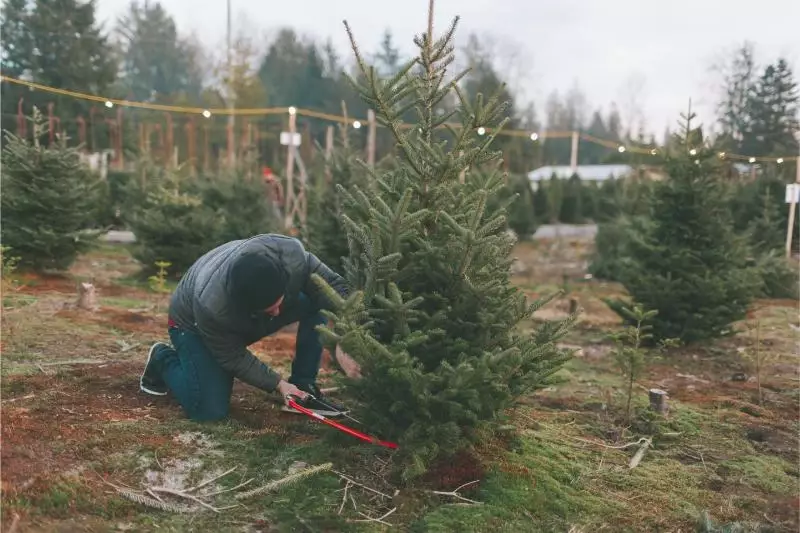
Legal and Regulatory Considerations
Before starting your tree farm, it's important to consider the legal and regulatory aspects associated with the business. Here are a few key things to keep in mind:
-
Zoning laws: Confirm that your land is zoned for tree farming. Some areas may have specific limitations or restrictions on agricultural activities. Check your local zoning laws or consult with a lawyer to ensure your business complies with these regulations.
-
Business structure: Decide on the best business structure for your farm. Common options include a sole proprietorship, partnership, or limited liability company (LLC). Each option has its own set of pros and cons, so make sure to research and choose the structure that best suits your needs.
-
Licenses and permits: Obtain any necessary licenses and permits to operate your tree farm legally. Depending on your location and the size of your farm, you may need permits for land use, water usage, and pesticide application. Be sure to research the requirements in your area and apply in a timely manner.
-
Insurance: Tree farming can be risky, so it's essential to have appropriate insurance coverage to protect your business. Look into liability insurance, property insurance, and workers' compensation insurance. Each policy offers varying degrees of coverage, so consult with an insurance agent to determine the best options for your business.
-
Taxation: Familiarize yourself with the applicable tax laws and regulations. Tree farms may be subject to various taxes, including income tax, sales tax, and property tax. Keep detailed records of your income, expenses, and assets to ensure accurate tax reporting.
-
Environmental regulations: Adhere to environmental regulations and best practices. Tree farms play a crucial role in protecting our environment, so it's important to follow sustainable practices and comply with relevant environmental laws. This may include soil conservation, avoiding pesticide runoff, and managing waste effectively.
Consider Using Drones
Drones can be a valuable addition to your tree farm operation. They offer various benefits, such as monitoring tree health, identifying potential problems, and even assisting in planting and harvesting. In this section, we will explore some key aspects to consider before incorporating drones into your tree farm.
Affordability has become one of the main benefits of using drones, as technological advancements have driven down prices for new models. Keep in mind, though, that you should also include software updates and data processing fees when calculating the costs of implementing drone technology.
Before integrating drones into your tree farm operation, it's essential to define clear goals. Some potential objectives could be:
- Monitoring tree growth and health
- Identifying water, nutrient, or pest issues
- Assisting in planting decisions
- Aiding in tree maintenance and management
It's crucial to choose the right type of drone for your farm, given the diverse range of available drone models. Consider factors such as flight time, camera resolution, and ease of use. Investing in a drone with advanced features, such as multispectral imaging, can provide valuable insights into your tree farm's health and help optimize operational efficiency.
When working with drones, ensure you are in compliance with local laws and regulations. Many countries have specific rules related to drone usage, especially concerning privacy and airspace restrictions. Research the regulations applicable to your region, and obtain any necessary permits or certifications.
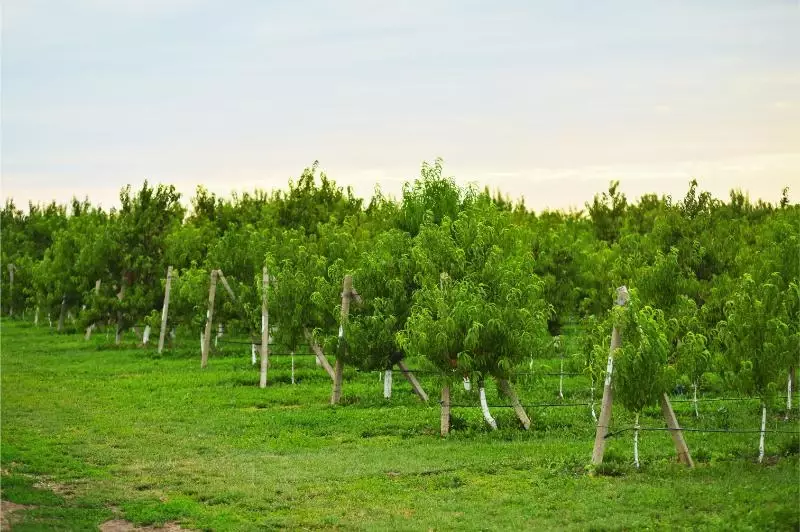
Research Tax Incentives
Starting a tree farm can be an exciting venture, and it's essential to be aware of the potential tax incentives available to you. There are several tax benefits that can help reduce your costs and increase profitability.
First, you should know that sales of trees are generally taxed at capital gains tax rates. If you own the tree for at least 12 months, you can benefit from the lower long-term capital gains tax rate.
Additionally, some expenses related to your tree farm can be deducted from your taxes. These include:
- Timber sale income: Profits from timber sales may qualify for tax incentives.
- Depreciation: You can claim depreciation on your tree farm equipment and structures.
- Section 179 expense: This allows you to deduct the full cost of qualifying equipment purchased or financed in a given year, up to a specified limit.
- Reforestation expenses: Deduct the costs of planting and establishing new trees.
Furthermore, property tax reductions may be available for tree farm owners in some areas. A well-managed tree farm can qualify for conservation easements, which can lead to a reduction in property taxes.
In order to maximize your tax benefits, it's crucial to plan ahead. The USDA Forest Service recommends consulting with a knowledgeable tax adviser. They can help you understand how federal income taxes apply to your specific situation, as well as provide guidance on the best strategies for managing your tree farm's expenses and income.
Consider Future Property Ownership
When planning your tree farm, you need to ensure long-term stability and growth to make your investment worthwhile. Here are a few factors to take into account regarding property ownership for your tree farm:
-
Land acquisition: Make sure to consider the costs of purchasing the land, seedlings, and planting equipment. Evaluate your financial capabilities and determine if you need additional funds, such as a business loan.
-
Estate planning: Consider the long-term consequences of your investment in a tree farm. If you have a family, include succession planning in your business strategy. This plan ensures a smooth transition for future generations.
-
Partnerships and legal agreements: If you're partnering with someone or forming a business entity, do not overlook the importance of legal agreements. Discuss each partner's roles, responsibilities, and profit-sharing, and make sure to have everything in writing.
-
Location: The soil quality and accessibility of your tree farm will play a significant role in its productivity. Ensure the land you select has fertile soil, an adequate water supply, and is convenient for transporting your products to market.
-
Zoning laws and regulations: Be aware of the zoning laws and regulations in your chosen area. Some locations may have restrictions on tree farming or require permits for specific activities.

Research Grant Programs
One way to ease the financial burden is by researching grant programs specifically available for tree farms. In this section, we will explore some grant programs that could help kick-start your tree farm.
The U.S. Department of Agriculture (USDA) and other agencies offer various grant programs for tree farming. For example, the Conservation Reserve Program (CRP) provides financial incentives for farmers that establish long-term, resource-conserving plant species on their land. This program can be particularly beneficial if you plan to establish a Christmas tree farm.
Another relevant grant is provided by the TREE Fund. They offer several research grant programs, including the Tree and Soil Research Fund Grant Program. This program supports projects related to landscape architecture and focuses on trees and the soils that support them. The grant amount ranges from $5,000 to $10,000 and has a submission deadline of September 15, 2023.
To help you navigate the world of tree farm grants, here are some steps and tips:
-
Research thoroughly: Spend time researching various tree farm grant programs from reliable sources like the U.S. Department of Agriculture and the TREE Fund.
-
Check eligibility: Make sure to review the eligibility requirements for each grant to ensure your project qualifies. Some grants may have specific criteria or regional limitations.
-
Prepare a strong application: A well-prepared grant application should include a detailed project description, budget, and timeline. Highlight the environmental and social benefits of your tree farm project.
-
Keep deadlines and submission guidelines in mind: Pay close attention to the application deadlines and submission guidelines for each grant program. Missing a deadline or not following the guidelines correctly can disqualify your application.
Impact of Climate Change
As you start your tree farm, it's important to consider the effects of climate change on this venture. Climate change has caused various challenges for tree farmers, such as droughts, wildfires, and flooding, which have led to unfavorable conditions for Christmas tree growth.
Here are a few points on how climate change might impact your tree farm:
- Temperature: Warmer temperatures can result in changes to growing seasons, affect tree health, and cause an increase in pests or diseases. Make sure to choose tree species that are more resilient to these changes.
- Drought: Dry conditions can lead to water scarcity, stressing trees and causing some species to struggle. Investing in drought-tolerant plantings and well-designed irrigation systems can help mitigate this issue.
- Extreme weather events: The increased frequency of storms, flooding, and other extreme weather events may damage your tree farm. Consider implementing risk-reduction strategies like planting windbreaks or creating buffers around your property.
- Pests and diseases: Climate change might lead to an increase in pest and disease frequency, affecting tree health. Be prepared to adopt integrated pest management strategies to keep them under control.
Additionally, you can combat climate change while operating a tree farm by following some best practices:
- Choose native or well-adapted tree species that can better withstand changes in climate.
- Improve soil quality and maintain healthy ecosystems to support your trees.
- Develop well-planned drainage systems to minimize the risk of flood damage.
- Implement sustainable tree management practices, such as avoiding clear-cutting.


